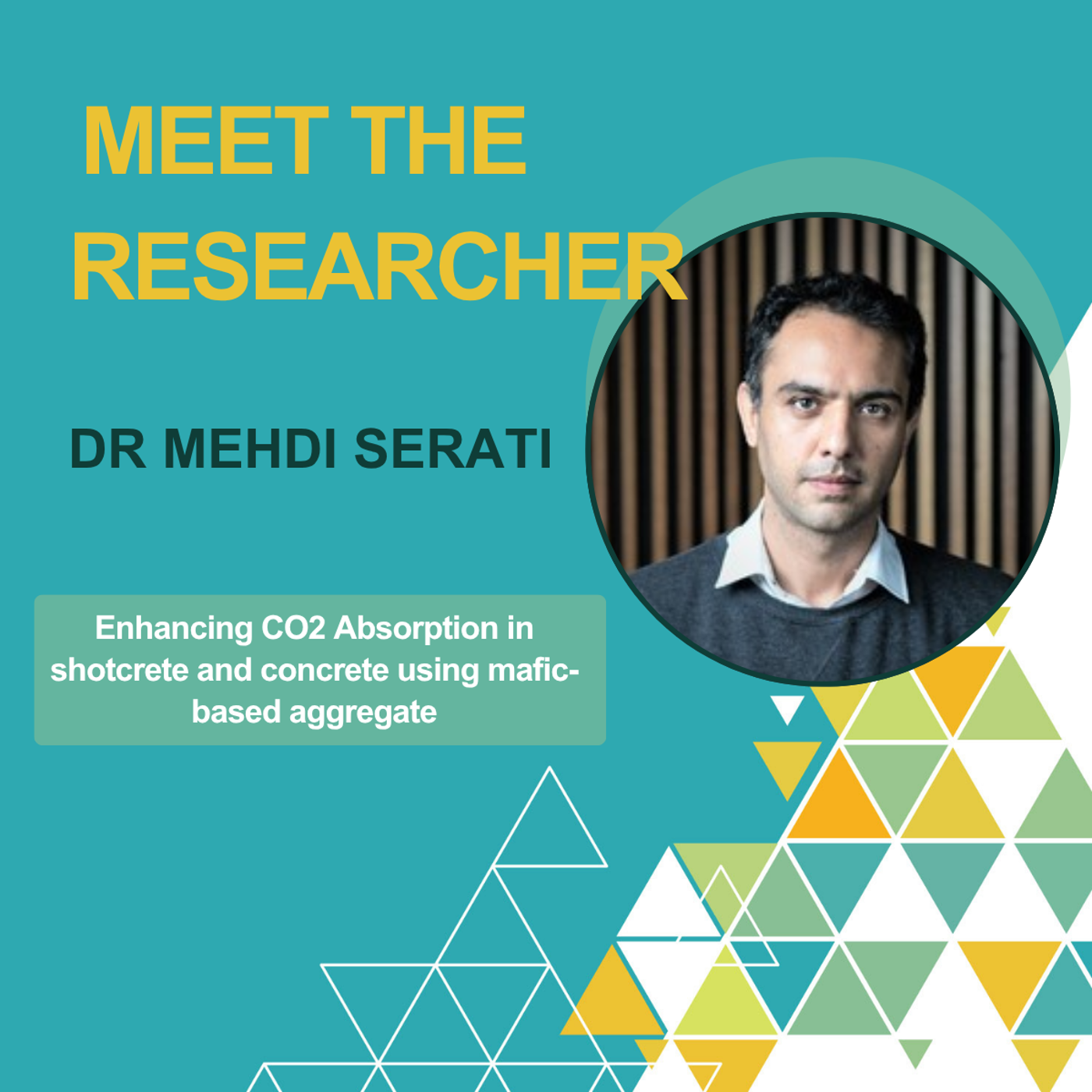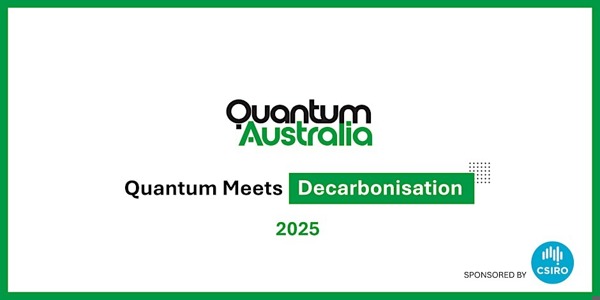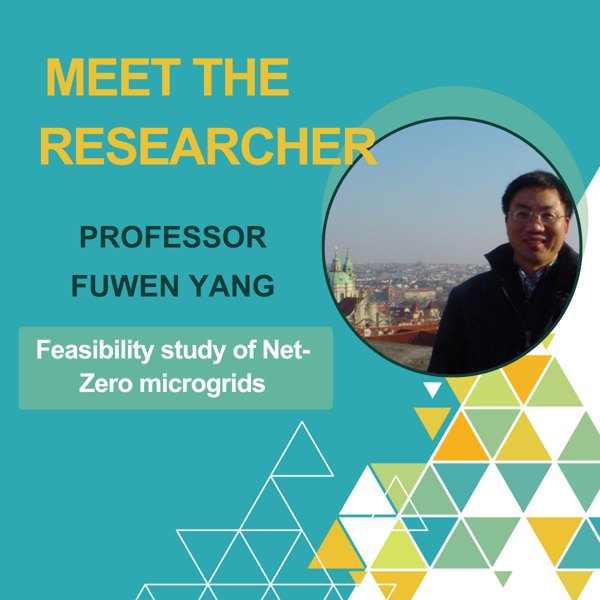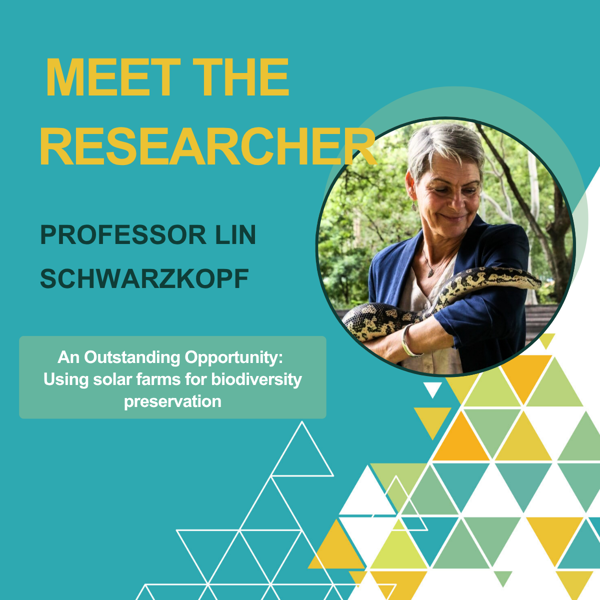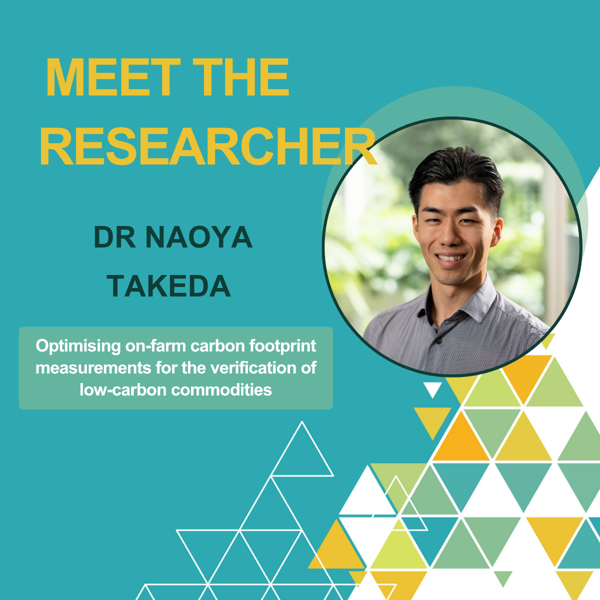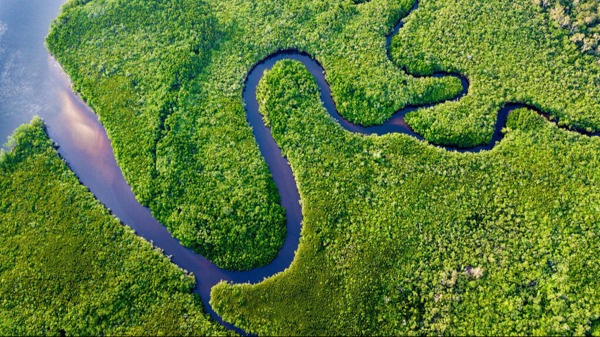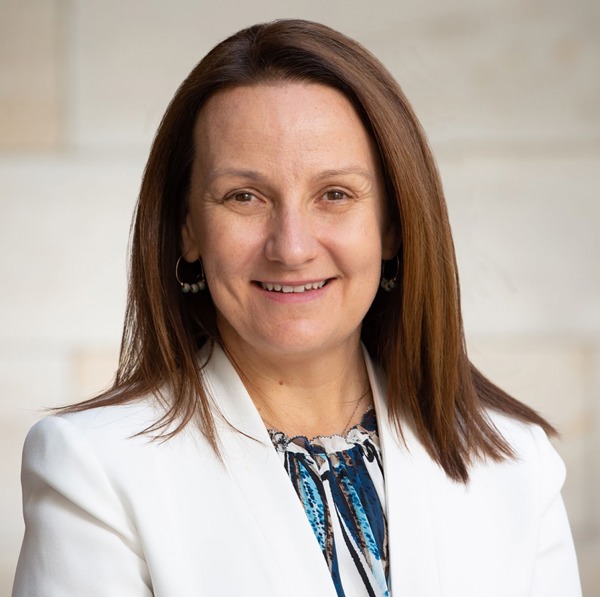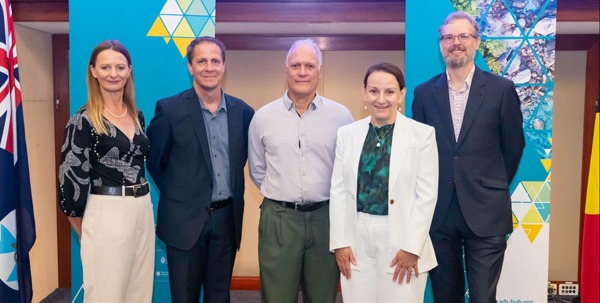Dr Mehdi Serati is a Senior Lecturer and Director of Research in the School of Civil Engineering at the University of Queensland. He completed his PhD through The Commonwealth Scientific and Industrial Research Organisation (CSIRO) and is currently the Deputy Manager of the Large Open Pit Project. His research focuses on geotechnical and rock mechanics, specifically in numerical methods to improve understanding of rock behaviour and brittle materials. He leads projects on sustainable construction materials and open-pit geotechnical innovation, bridging theoretical research with practical industry applications.
Dr Serati is currently leading the Enhancing CO2 Absorption in shotcrete and concrete using mafic-based aggregate project for the Qld Decarb Hub. We asked him a few questions about himself and his research:
- Describe your research project in a single sentence.
This research explores using Queensland’s mafic and ultramafic rock aggregates in concrete and shotcrete to enhance their natural CO₂ absorption, aiming to reduce construction’s carbon footprint and support regional carbon sequestration efforts.
- Can you introduce the key members of your research team and briefly explain what their roles/expertise and contributions to the project are (this includes you!)?
The project is led by Dr Mehdi Serati (UQ Civil) who initiated the research idea and oversees the experimental design framework. The project is also supported by PhD student Mr Xuanyu Zhu serving as research assistant, Dr Muhannad Al Kalbani and Dr Thierry Bore (UQ Civil), and Dr Harald Hofmann (CSIRO/UQ) - experts in chemo-geophysical analysis who provide technical expertise on data interpretation and experimental set-up - alongside industry partners including Dr Harry Asche (Aurecon), Dr Ian van Wijk (FSG Geotechnics), Dr Tom Ritchie (Hardie Pacific), and Dr Heather Sparks (Geological Survey of Queensland), who contribute essential materials, commercial perspectives, and guidance on practical field implementation and large-scale application challenges.
- What first inspired you to take on this research topic?
Cement production and the extraction, processing, and transport of aggregates consume substantial energy and contribute significantly to global CO2 emissions, making concrete and shotcrete major sources of greenhouse gases. However, these materials can naturally absorb CO2 over their lifetimes through the “sponge effect,” partially offsetting their carbon footprint. The impact of different aggregates, particularly Queensland’s abundant mafic and ultramafic rocks, on CO2 absorption at micro and macro scales is not well understood. This research aims to investigate how these unique rock resources can enhance CO2 sequestration in concrete and shotcrete, providing practical, scalable solutions for low-carbon construction.
- What do you hope your research will contribute to the world?
The project contributes to global and local climate mitigation efforts by enhancing the sustainability of construction materials and advancing CO2 sequestration strategies. By optimizing the use of CO2-absorbing aggregates in concrete and shotcrete, it seeks to reduce the carbon footprint of the construction industry, supporting Queensland’s greenhouse gas reduction and sustainable infrastructure goals. Beyond construction, the research provides valuable insights into the role of mafic and ultramafic formations in carbon capture, offering practical, scalable solutions that can inform CO2 sequestration and carbon management practices worldwide, thereby contributing to broader efforts to combat climate change.
- What would make the biggest difference in helping your research have impact?
Strong dissemination through industry networks, government agencies, and climate initiatives would ensure the research translates into actionable strategies for reducing carbon emissions in construction and broader CO2 sequestration efforts.
- If you could amplify one positive trend already underway, what would it be and why?
The positive trend I would amplify is the growing adoption of low-carbon and carbon-sequestering construction materials, alongside the recycling of waste into new synthetic aggregates for construction purposes. Over the past seven years or so, the team has actively contributed to several such initiatives in this area, funded by the Queensland government and industry partners. Strengthening this trend would accelerate the use of sustainable and carbon-capturing materials in construction, reduce reliance on virgin resources, and promote circular economy practices, while providing a pathway for the research to deliver practical, scalable solutions that benefit both industry and the environment.
- What does your dream job look like?
My dream job combines cutting-edge and multidisciplinary research with real-world impact that also involves mentoring students (next generation researchers) and promoting climate-positive infrastructure.
- What does an ideal non-working day look like to you?
Spending time with family and friends while sharing good food and nice (non-work related!) conversation.
- In your opinion, what is the single best thing anyone can do to support decarbonisation?
Adopting (and promoting within their contacts) systemic and high-impact actions that reduce greenhouse gas emissions at their source, e.g. transitioning to solar and renewable energy, and recycling and reusing materials.
- What’s one fun fact about you?
I love exploring new hiking trails and make it a goal to visit at least one new major city worldwide each year, a streak I’ve successfully maintained for the past ~6 years.
Find out more about Dr Serati’s research and publications here.
